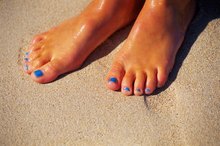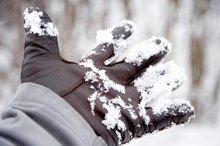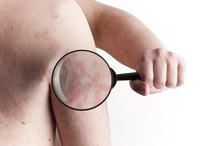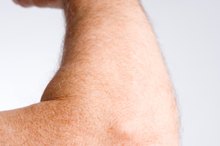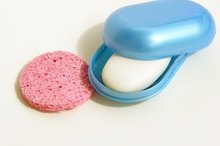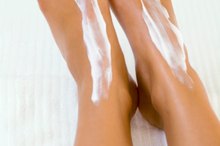Causes of Tiny, Red Bumps on Fingers
Tiny, red bumps on your fingers could stem from one of several causes. If you notice a rash or symptom that does not respond promptly to a home remedy or an over-the-counter anti-itch ointment, you should seek medical advice. In some cases, you may need a prescription to clear up the red bumps and any resulting itching or discomfort.
Hand Eczema
Eczema, also called atopic dermatitis, is an itchy rash that may be red, swollen, oozing, crusty and scaly. Most people with eczema develop it as children, and more than half of adults continue to have it through adulthood, often in the form of hand eczema, explains the American Academy of Dermatology 2. Itchy, red bumps on the fingers may develop. Outbreaks may occur after exposure to chemicals or frequently using the hands, as when gardening or doing household or office chores. Protect your hands with gloves when going outside in cold weather or when you are washing dishes. Your doctor may prescribe an ointment to clear up hand eczema, though the condition may take several months to fully resolve.
- Eczema, also called atopic dermatitis, is an itchy rash that may be red, swollen, oozing, crusty and scaly.
- Your doctor may prescribe an ointment to clear up hand eczema, though the condition may take several months to fully resolve.
Scabies
Causes of a Skin Rash on Hands and Feet
Learn More
Scabies are tiny mites that live on humans, and their burrows and bites can cause red bumps. One of the first symptoms is itching, and it occurs within a few hours to a few days after infestation, says DermNet NZ 3. You may notice burrows, which are small tracks between your fingers where the mites dig into the skin. The scabies might lay eggs or leave feces in the burrows. When the scabies bite, they leave very itchy, tiny red bumps. Scabies is very contagious and will not clear up on its own. If you think you may have the condition, see your doctor for treatment. You will need to apply insecticide ointments for several days to kill the mites, and the treatment often needs to be repeated a month later.
- Scabies are tiny mites that live on humans, and their burrows and bites can cause red bumps.
- You may notice burrows, which are small tracks between your fingers where the mites dig into the skin.
Fungal Infection
Tiny, red bumps on your fingers around your fingernails may be a symptom of a fungal skin infection, says the American Diabetes Association 1. Fungal infections are common in those with diabetes or other conditions that impair the immune system. Other signs include itching and the development of tiny blisters or scales. If you have diabetes and think you may have a yeast infection, see your doctor promptly for treatment. You may need a prescription anti-fungal medication to completely cure the infection.
- Tiny, red bumps on your fingers around your fingernails may be a symptom of a fungal skin infection, says the American Diabetes Association 1.
- You may need a prescription anti-fungal medication to completely cure the infection.
Related Articles
References
- American Diabetes Association: Skin Complications
- American Academy of Dermatology: Eczema/Atopic Dermatitis
- DermNet NZ: Scabies
- Micali G, Lacarrubba F, Verzì AE, Chosidow O, Schwartz RA. Scabies: Advances in Noninvasive Diagnosis. PLoS Negl Trop Dis. 2016;10(6):e0004691. doi:10.1371/journal.pntd.0004691
- Chandler DJ, Fuller LC. A Review of Scabies: An Infestation More than Skin Deep. Dermatology (Basel). 2019;235(2):79-90. doi:10.1159/000495290
- Su WJ, Fang S, Chen AJ, Shan K. A case of crusted scabies combined with bullous scabies. Exp Ther Med. 2015;10(4):1533-1535. doi:10.3892/etm.2015.2668
- Crusted scabies. Genetic and Rare Diseases Information Center. Published June 17, 2019.
- Mccarthy JS, Kemp DJ, Walton SF, Currie BJ. Scabies: more than just an irritation. Postgrad Med J. 2004;80(945):382-7. doi:10.1136/pgmj.2003.014563
- Centers for Disease Control and Prevention (CDC). "Scabies—Resource for Health Professionals." Atlanta, Georgia; updated March 21, 2017.
- Stiff KM, Cohen PR. Scabies Surrepticius: Scabies Masquerading as Pityriasis Rosea. Cureus. 2017 Dec 19;9(12):e1961. doi: 10.7759/cureus.1961.
Writer Bio
Michelle Kulas worked in the health-care field for 10 years, serving as a certified nurses' assistant, dental assistant and dental insurance billing coordinator. Her areas of expertise include health and dental topics, parenting, nutrition, homeschooling and travel.

